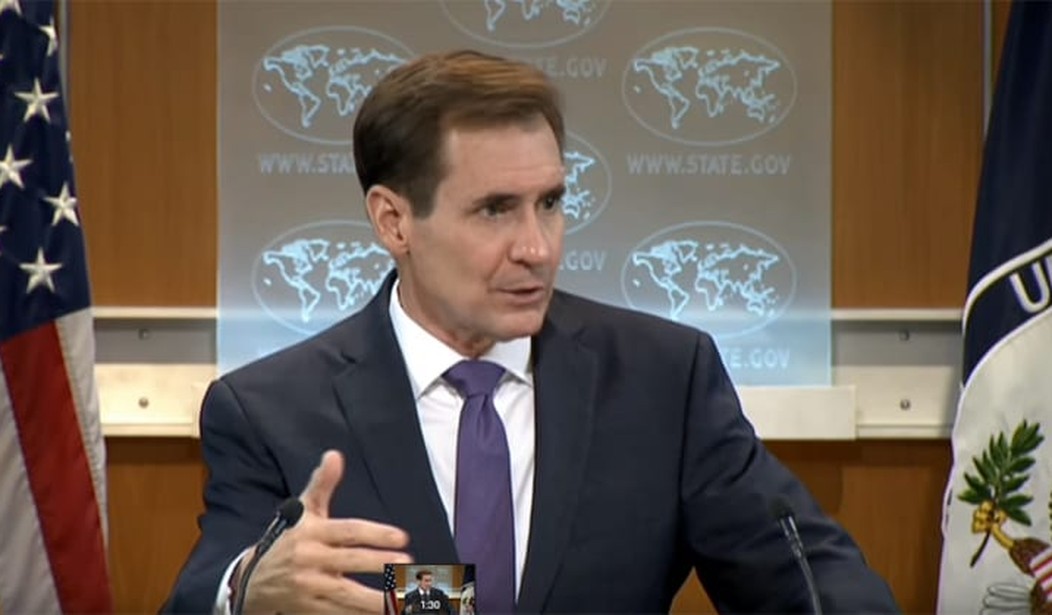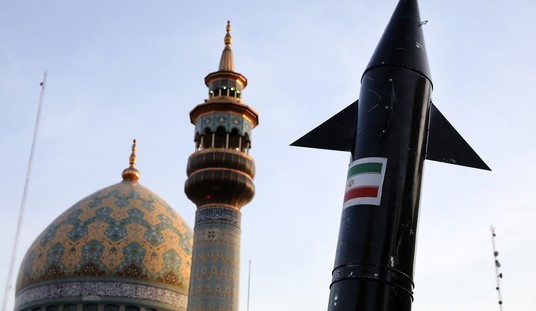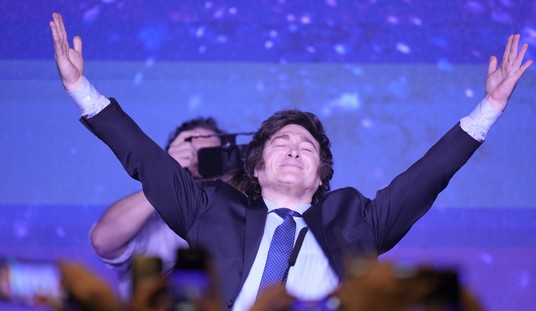State Department spokesman John Kirby admitted today that a key exchange in a video from a December 2013 press briefing was deliberately removed by an unknown entity at the State Department. “We do not know who made the request to edit the video or why it was made,” Kirby told reporters. He also indicated that there would be no further investigation into the matter because apparently no rules were broken.
In the missing eight-second segment, former State Department spokeswoman Jen Psaki seemed to suggest that the Obama administration had been lying when the Iran nuclear talks began.
In February 2013, then-State Department Spokesperson Victoria Nuland flatly denied “direct, secret bilateral talks with Iran.” Republicans on Capitol Hill were nervous about the rumors, but the media was willing to accept the State Department’s denial. The secret negotiations with Iran also alarmed America’s allies in Jerusalem, who had also been kept in the dark about their closest ally’s clandestine meetings with their most potent adversary.
Nuland’s successor, Jen Psaki, would later admit that, as Fox’s James Rosen reported, “the meetings stretched back to 2011.”
The State Department initially tried to blame the missing footage on a “glitch,” convincing no one. Spokeswoman Elizabeth Trudeau told dubious reporters on May 10 that ” there was a glitch in the State Department video.”
When Fox flagged it for us, we actually replaced it with a video from DVIDS, which is the military repository where a lot of news media gets its video. The whole video was there, and we also annotated it on our YouTube channel.
Today, Kirby put the lie to that unbelievably lame excuse:
Transcript via America Rising Squared:
BRADLEY KLAPPER: There were a couple questions yesterday that I wanted to close off. First, has there been any conclusion on missing tape from, I think it was a December 2013 briefing when it was posted online it had a few minutes that were cut out of it. Has there been any resolution on how that happened?
JOHN KIRBY: Yes and thank you for that question, Brad. As many of you know, and I want to be specific on this so I’m going to refer to my notes a bit. As many of you know and as some of you have brought to our attention, a portion of the State Department’s December 2nd 2013 press briefing was missing from the video that we posted on our YouTube account on our website. That missing portion covered a series of questions about U.S. negotiations with Iran. When alerted to this, I immediately directed the video to be restored in its entirety with the full and complete copy that exists and had existed since the day of the briefing on the Defense Video And Imagery Distribution System website, otherwise known as DVIDS. I also verified that the full transcript of the briefing, which we also post on our website, was intact and had been so since the date of the briefing. I asked the office of the legal advisor to look at this, including at any rules that we had in place. In so doing, they learned that a specific request was made to excise that portion of the briefing. We do not know who made the request to edit the video or why it was made. To my surprise, the Bureau Of Public Affairs did not have in place any rules governing this type of action. Therefore, we are taking immediate steps to craft appropriate protocols on this issue. As we believe, that deliberately removing a portion of the video was not and is not, in keeping with the State Department’s commitment to transparency and public accountability. Let me just finish. I got a little bit more. I was just turning the page. Specifically, we are going to make clear that all video, transcripts and daily press briefings will be immediately and permanently archived in their entirety, and that in the unlikely event that narrow, compelling circumstances require edits to be made, such as the inadvertent release of privacy-protected information, they will only be made with the expressed permission of the Assistant Secretary of State for Public Affairs and with the appropriate level of annotation and disclosure. I have communicated this new policy to my staff and it takes effect immediately.
BRADLEY KLAPPER: Do you know when the edit, or the cut I should say, occurred? Was it some point afterwards? Was it the same day?
JOHN KIRBY: To the best of our knowledge the edit was done the same day.”
BRADLEY KLAPPER: And how do you know it was deliberately removed as you said?
JOHN KIRBY: As I understand it, the request was made, again back in 2013 over the phone. The recipient of the call, who is one of the editors, does not remember anything other than that the caller was passing on a request from somewhere else in the bureau.
BRADLEY KLAPPER: And are you doing any – I mean as you said there was no rules about this but are you nevertheless investigating further to figure out who did this and why?
JOHN KIRBY: The short answer Brad is no. As I said there was no rules in place at the time to govern this sort of action so while I believe it was an inappropriate step to take, I see little foundation for pressing forward with a formal investigation. My focus, as the Assistant Secretary going forward is going to be making sure that we have in place clear policies and procedures that prevent this sort of thing from happening again.
Kirby’s admission today proves that the State Department 1) tried to cover up a damaging admission that the administration intentionally misled the public on the Iranian nuclear deal; 2) when caught, tried to paper over the cover-up with a lame excuse that insulted the intelligence of reporters; 3) proved itself to be utterly incorrigible by refusing to investigate the matter further since “no laws were broken.”
Another embarrassing spectacle for “the most transparent administration in history.”








Join the conversation as a VIP Member